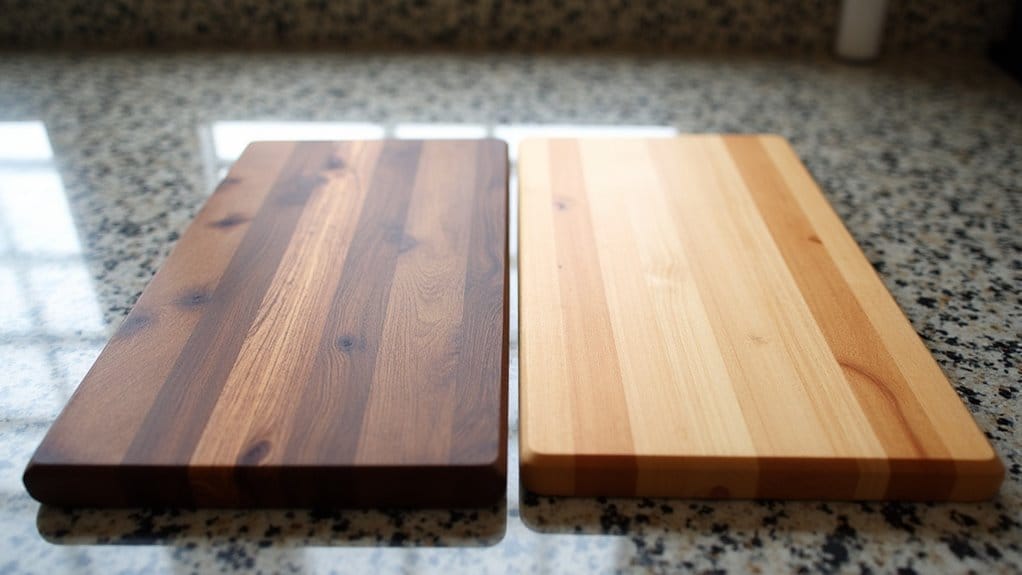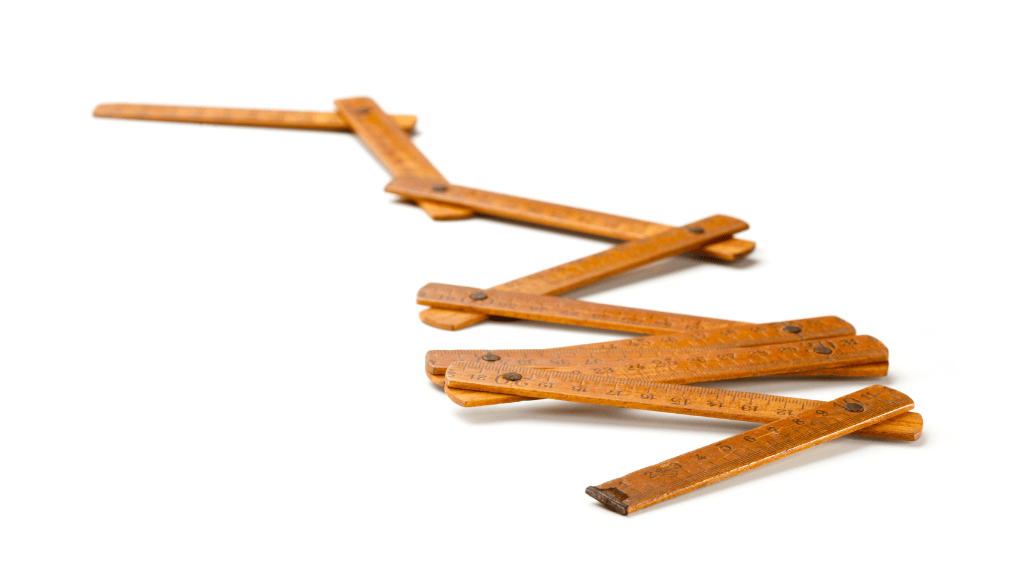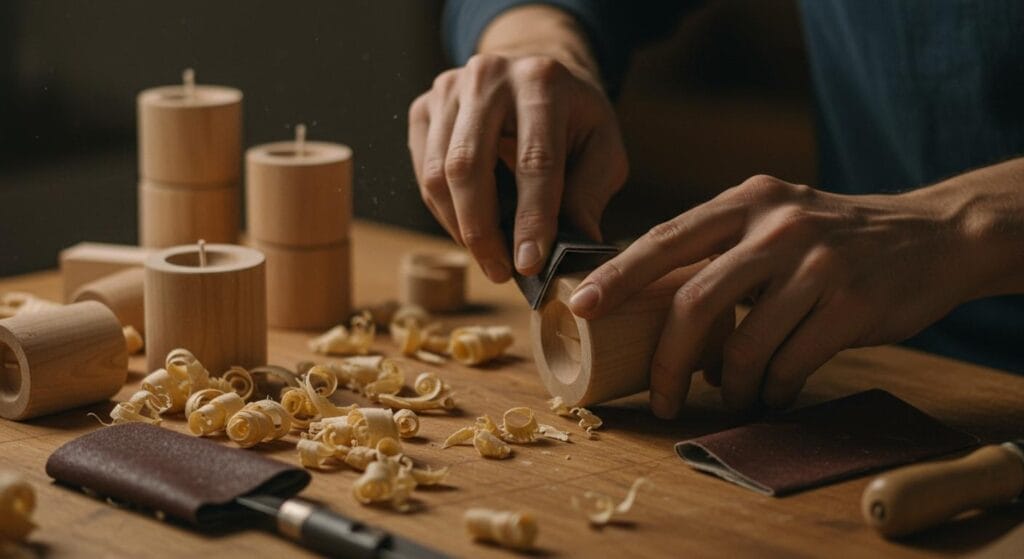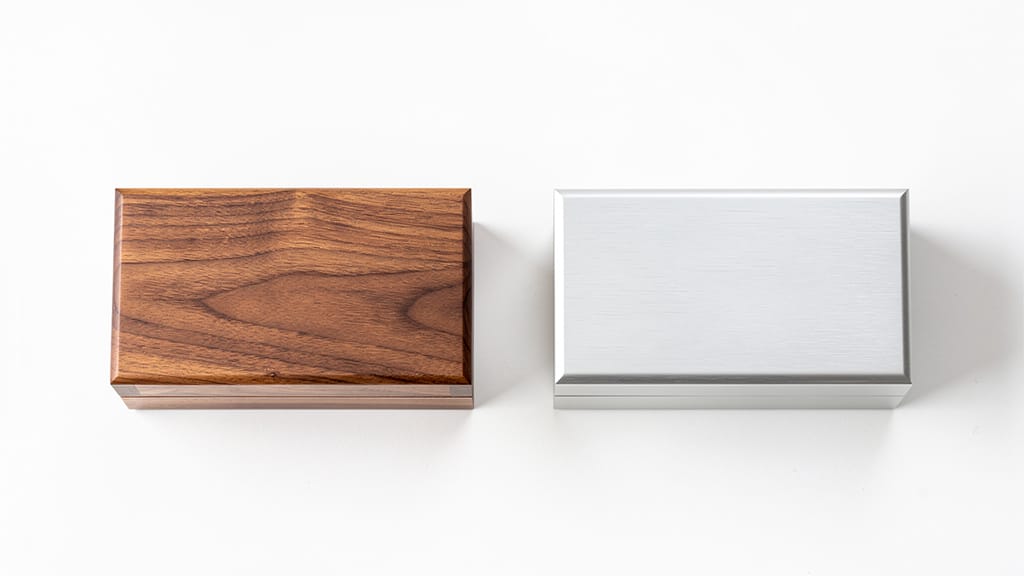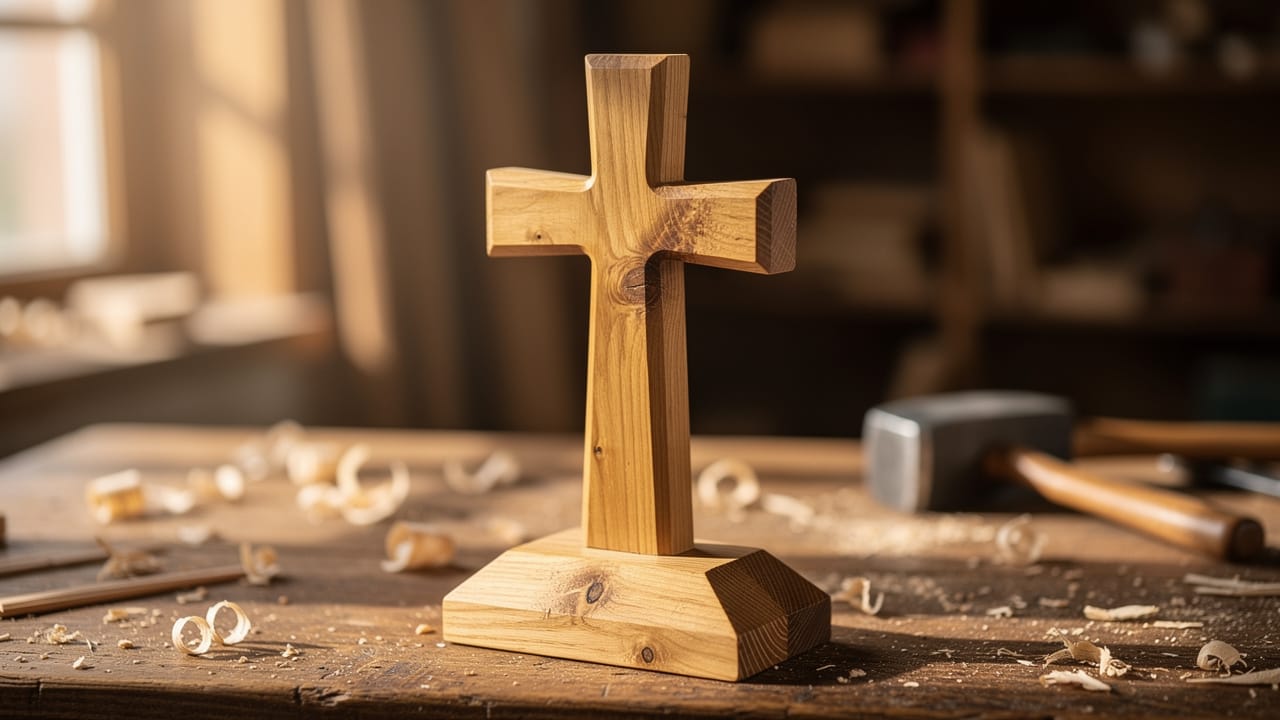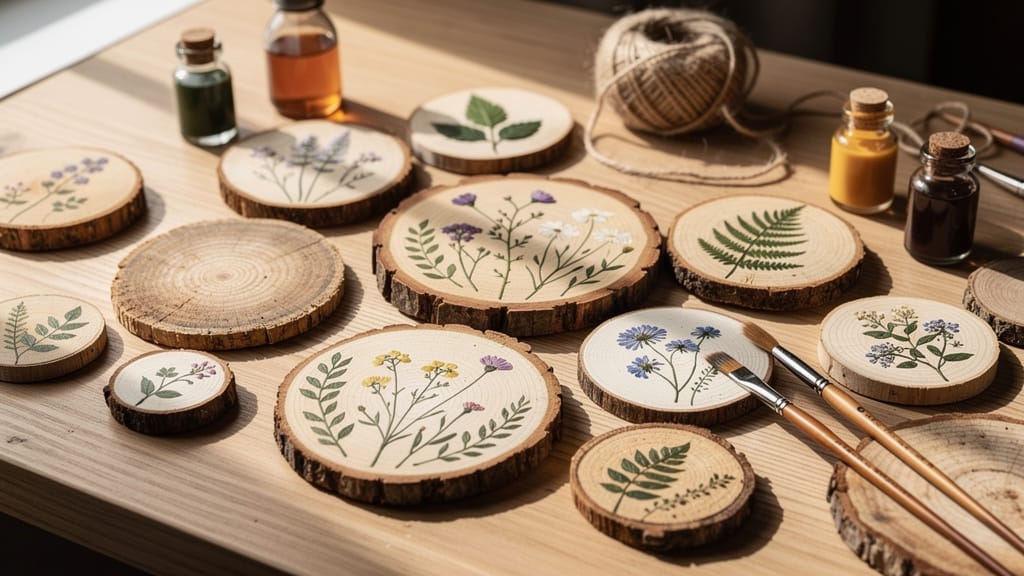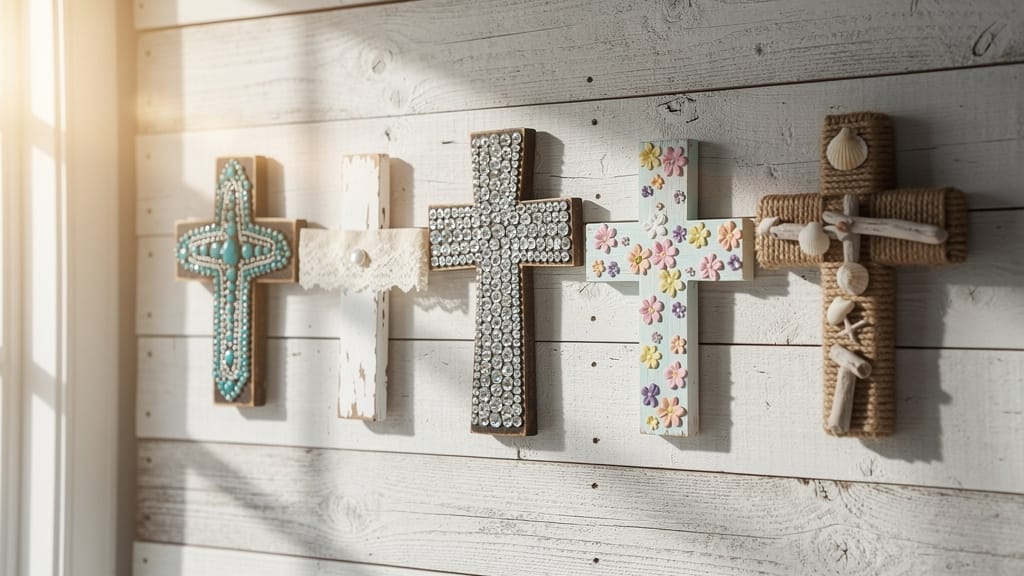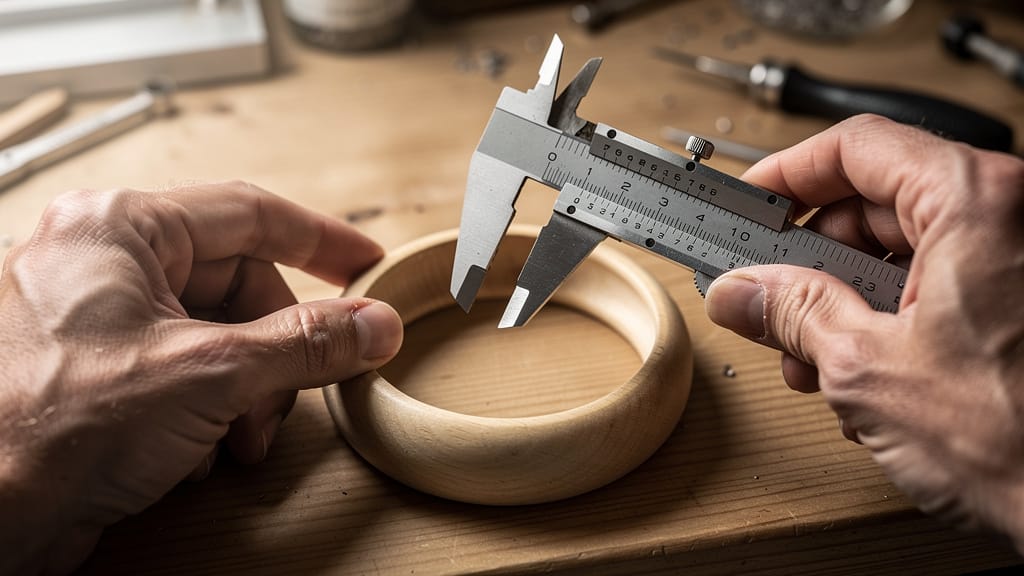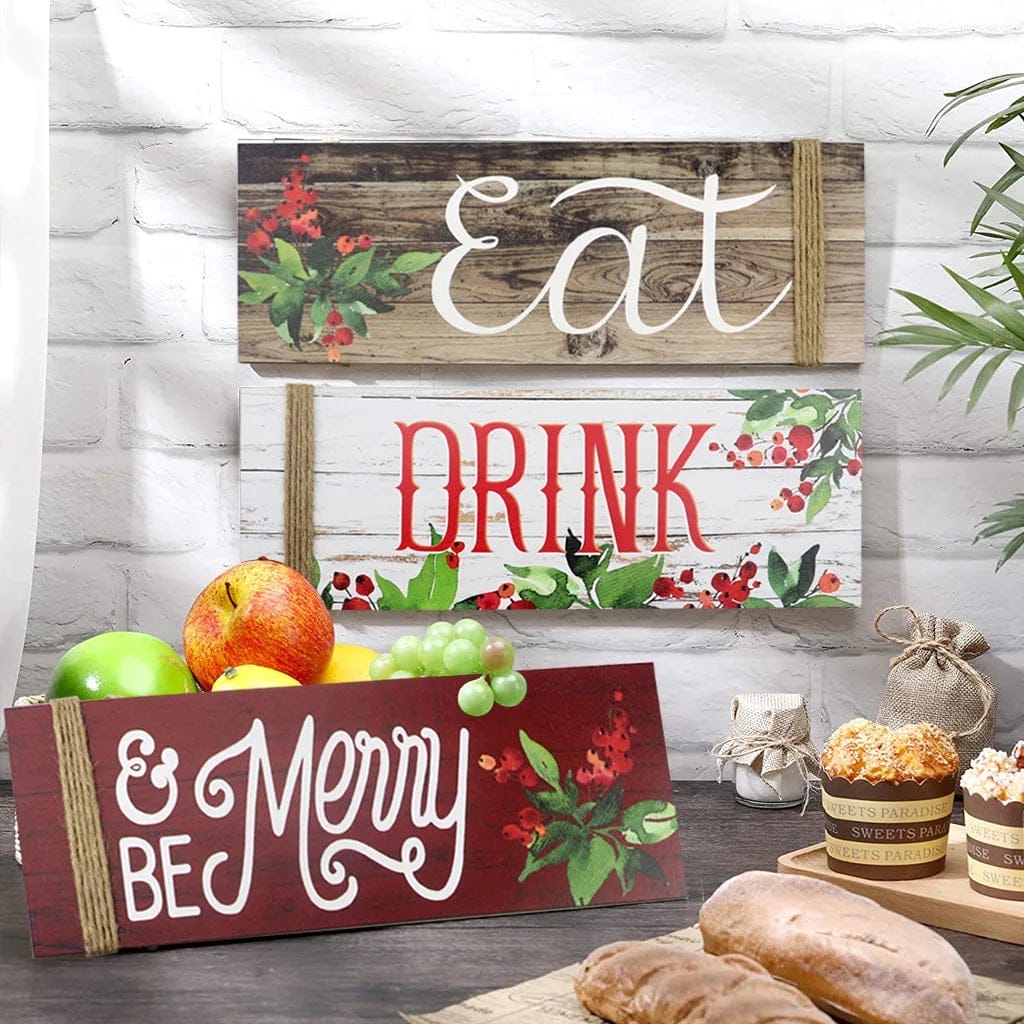Maple cutting boards offer superior durability with their tight grain structure and natural antibacterial properties. Walnut boards excel in knife-friendliness and aesthetic appeal.
Maple’s harder surface (1,450 lbf) resists scratches better and requires less maintenance, though it’s less textured for food grip. Walnut delivers premium looks and self-healing properties but comes at a higher price point.
Walnut vs maple cutting board: Your choice depends on whether you prioritize practical performance or distinctive character in your kitchen workspace.
Key Takeaways
- Maple offers superior durability with a 1,450 lbf hardness rating. But walnut provides natural self-healing properties and better knife preservation.
- Walnut boards have a rich, dark aesthetic and enhanced food grip. Maple features a clean, bright appearance with a uniform grain.
- Maple requires less maintenance and shows fewer knife marks. Walnuts require more frequent oiling, and scratches are more noticeable.
- Both woods possess natural antibacterial properties. But maple’s tighter grain structure offers better resistance to bacterial growth.
Walnut Cutting Boards: Pros and Cons

When you’re considering a walnut board, you’ll find its dense grain structure offers excellent resistance to knife marks.
However, you’ll need to commit to regular oiling maintenance and be cautious with heavily pigmented foods.
Pros
Walnut stands out as a premium choice due to its exceptional material properties. A walnut board‘s dense structure creates an incredibly sturdy cutting surface that won’t dull your knives prematurely. Its natural self-healing properties help blend minor cuts. This extends the lifespan of your high-quality wooden cutting board.
The textured grain pattern enhances food grip during prep work, preventing dangerous slips.
When properly maintained with regular oiling, your walnut board’s rich, dark aesthetics and functionality will surpass most maple cutting boards. It’s a worthwhile investment for serious home cooks.
Cons
Despite walnut’s premium qualities, several drawbacks deserve consideration.
Walnut wood cutting boards command higher prices than maple alternatives, significantly stretching your budget. The dark surface tends to highlight scratches and knife marks more visibly. So this requires more frequent maintenance to preserve its appearance.
The wood’s natural texture can affect cutting precision, especially for detailed knife work.
If you’re sensitive to wood allergens, walnut might trigger allergic reactions. This makes it an unsuitable choice for your kitchen.
Additionally, you’ll need to commit to regular oiling routines. Because walnuts’ tendency to dry out demands consistent care to maintain their integrity.
Maple Cutting Boards: Pros and Cons

You’ll appreciate maple’s tight grain structure. It delivers a smooth cutting surface that keeps your knives sharper longer while providing exceptional precision for detailed cuts.
Advantages
Maple cutting boards stand out as exceptional kitchen tools. This is due to their impressive combination of natural antibacterial properties and structural integrity.
The tight grain structure creates a superior cutting surface that won’t dull your knives like other hardwoods. This natural material resists scratches and wear, making it a durable choice for daily food prep.
The board’s light, creamy appearance and uniform grain pattern elevate your kitchen’s aesthetic while providing practical benefits. Unlike a walnut wood cutting board, maple’s natural antibacterial properties help prevent contamination.
With simple maintenance, including warm water washing and occasional oiling, your maple butcher block will retain its beautiful cutting surface for years.
Disadvantages
Maple cutting boards develop more noticeable knife marks over time and require vigilant moisture management to prevent warping.
You’ll need to commit to regular maintenance for maple, applying food-safe oils to prevent drying and cracking.
If you’re seeking a low-maintenance option, these wooden boards mightn’t be your ideal choice.
Walnut Vs Maple Cutting Board: Performance Comparison

Maple’s higher Janka hardness rating translates to superior resistance against deep cuts and dents. But walnut’s self-healing properties help maintain its surface appearance over time.
Hardness Comparison (Janka Scale Reference)
Comparing their Janka hardness ratings reveals a significant performance gap between these two types of wood.
Maple’s impressive 1,450 lbf rating outperforms walnut’s 1,010 lbf. This translates to enhanced durability in your kitchen.
Maple’s superior hardness provides exceptional resistance against dents and daily wear. But walnut offers a softer yet still resilient surface that’s particularly gentle on your knife edges.
When choosing between walnut vs maple cutting boards, consider that maple’s heightened durability makes it ideal for heavy-duty use. But walnut’s self-healing properties compensate for its lower Janka hardness rating.
Resistance to Cuts, Warping, and Cracking
Despite their differing hardness ratings, both maple and walnut cutting boards excel in resisting daily wear and tear.
Maple cutting boards exhibit exceptional resistance to cuts. This is thanks to their tight grain structure, which minimizes visible knife marks. Walnut boards counter with their self-healing properties, naturally blending shallow cuts over time.
When it comes to moisture resistance, both woods stand strong. But maple edges ahead in handling heavy use without showing wear. You won’t need to worry much about warping and cracking with either choice. Walnut’s natural density and maple’s structural integrity guarantee lasting durability with proper maintenance.
Stain and Odor Resistance
Both maple and walnut boards demonstrate impressive resistance to stains and odors. Each brings unique advantages to your kitchen workspace.
Maple boards excel due to their natural antibacterial properties and tight wood grain structure, which actively fight against moisture penetration and odor retention.
Walnut boards counter with their dense composition that resists staining while minimizing odor absorption. Their self-healing characteristics help minimize cut marks where bacteria could hide.
For ideal performance with either choice, you’ll need to maintain regular maintenance with food-safe oils to enhance their natural stain and odor-fighting properties.
Effect on Knife Edges (Micro-Slicing Tests)
When testing knife edge retention through micro-slicing analysis, maple’s tight grain structure demonstrates superior performance in preserving blade sharpness during prolonged use.
Your knife’s longevity benefits from the smoother surface of maple. This reduces edge wear during repetitive cutting tasks.
While walnut boards offer excellent self-healing properties and moderate grip, they’ll cause slightly more blade wear over time.
However, you’ll find both materials maintain knife edge integrity when properly maintained with food-safe oil.
For high-frequency cutting, maple’s superior resistance to slice marks makes it the best choice. But walnut’s textured surface remains a reliable alternative for balanced performance.
Longevity and Lifecycle
Throughout years of durability testing, maple boards consistently outperform walnut in resisting wear from heavy daily use.
The dense grain structure of maple cutting boards offers superior resistance to deep knife marks. This ensures your board lasts through intense kitchen tasks.
While walnut boards offer impressive self-healing properties for minor cuts, they’ll require more frequent maintenance to maintain their integrity.
You’ll need to commit to regular maintenance for both types, including proper oiling and careful washing.
With quality wood and diligent care, either choice can serve you well for years, though maple’s natural durability gives it a slight edge in longevity.
Food Safety and Hygiene Considerations

The food safety profile of wooden cutting boards stands as a critical consideration for both home cooks and professional chefs.
Both walnut for cutting and maple wood possess natural antibacterial properties that help combat bacterial growth. Maple’s tight grain structure is particularly resistant to knife marks, while walnut offers similar protection.
To maintain these qualities, you’ll need to apply food safe oils regularly and follow proper cleaning protocols. Remember to avoid using either wood for raw proteins to prevent cross-contamination.
Instead, reserve your wooden boards for produce, bread, and cooked items, using plastic boards for raw meats.
Aesthetics and Kitchen Style Matching
Maple boards complement modern and farmhouse kitchen styles with their bright, uniform appearance. They pair naturally with light-colored quartz or marble countertops and white cabinetry.
Walnut’s deep, rich tones create a striking contrast in contemporary spaces while harmonizing beautifully with darker wood cabinets and industrial-style fixtures.
Which Wood Fits Modern, Rustic, or Farmhouse Kitchens?

Professional woodworkers recognize that selecting between walnut and maple cutting boards goes beyond mere functionality. It’s about creating harmony with your kitchen’s aesthetic vision.
If you’re designing a modern kitchen decor scheme, walnut boards offer sophisticated dark tones and distinctive grain patterns that complement contemporary spaces.
For farmhouse-style kitchens, maple cutting boards offer a bright, uniform appearance that complements rustic elements.
Walnut’s chocolate-brown hues excel in sleek, modern settings, while maple’s creamy tones naturally fit traditional spaces.
Both woods can adapt across styles. It’s about matching your board’s characteristics to your kitchen’s personality.
Matching Countertops and Cabinetry

Matching your board to existing countertops and cabinetry creates a cohesive kitchen design that elevates the overall aesthetic.
If you have white or light-colored cabinetry, a maple board‘s creamy tones will create a seamless blend, enhancing your kitchen’s bright, modern appeal. For darker cabinetry or earth-toned countertops, the rich chocolate hues of a walnut board provide a sophisticated contrast.
Cost and Availability: Budgeting for Your Next Cutting Board

Understanding the significant price differences between maple and walnut options will help you make an informed decision.
Maple vs walnut cutting boards vary considerably in price, with maple starting at $41.95 and walnut commanding $193.95 or more. While affordable maple cutting boards offer excellent value, the premium aesthetic of walnut justifies its higher cost.
Custom cutting boards offer flexibility but require a specific quote. Factor in maintenance costs for food-safe oils to protect your investment.
Care Guide: How to Make Either Board Last Decades

To ensure your walnut or maple cutting board lasts for decades, proper maintenance requires a systematic approach to cleaning and preservation.
After each use, wash your wooden board with warm, soapy water and dry it immediately. Expert cutting board makers recommend applying food-safe mineral or walnut oil regularly to prevent cracking.
Whether you’ve chosen hard maple, walnut, teak, or cherry, never soak or wash your perfect cutting board in the dishwasher.
Store it horizontally in a dry area away from heat sources. Maintain its surface by sanding out minor cuts and reapplying oil. These practices will protect your investment and guarantee peak performance.
When to Choose Walnut and When to Choose Maple

Your choice between walnut and maple cutting boards directly impacts your kitchen performance and the quality of your food preparation results. The cutting surface characteristics of each wood determine its ideal applications.
Choose walnut’s textured surface when you need enhanced grip for secure food handling during heavy-duty tasks. Opt for maple’s smooth surface when precision cuts are essential.
For precision work, reach for maple’s sleek surface. When power and control are paramount, walnut’s natural texture delivers.
Maple’s natural antibacterial properties make it the best wood for cutting boards when working with produce, and it resists staining from beets and vibrant ingredients.
While walnut offers sophisticated aesthetics with its dark tones, it’s particularly suited for demanding tasks where durability matters most.
Conclusion
Whether you choose walnut or maple for your cutting board, you’ll find that both offer excellent durability when properly maintained. Maple’s harder surface and lower cost make it ideal for heavy daily use, while walnut’s natural beauty and antimicrobial properties suit premium presentation boards.
Consider your specific needs: if you’re doing heavy chopping, go with maple; if you’re after visual appeal and gentler knife work, walnut’s your best choice.
FAQs
What Is the Best Wood for a Cutting Board?
You’ll want to choose maple for your cutting board, as it’s exceptionally durable, naturally antibacterial, and resists knife marks well. Its tight grain structure prevents moisture absorption and bacterial growth.
Is Walnut a Good Wood for a Cutting Board?
You’ll find walnut to be an excellent choice for a cutting board. Its self-healing properties, natural antibacterial qualities, and dense grain structure protect against knife damage while providing a durable, hygienic cutting surface. Additionally, walnut is both aesthetically pleasing and resilient, making it a popular option among both home cooks and professional chefs. When considering the best woods for cutting boards, walnut stands out not only for its functionality but also for its rich color and timeless appeal. This combination of beauty and practicality ensures that your cutting board will be a cherished kitchen tool for years to come.
Is Maple or Walnut More Durable?
You’ll find that maple’s higher density makes it more durable than walnut. While both are excellent choices, maple’s superior hardness rating and exceptional resistance to scratches give it the edge in longevity.
What’s More Expensive, Maple or Walnut?
Walnut cutting boards are considerably more expensive than maple, with prices starting at $193.95, compared to maple’s entry point of $41.95. Walnut’s dense grain and rich aesthetics drive costs higher.

